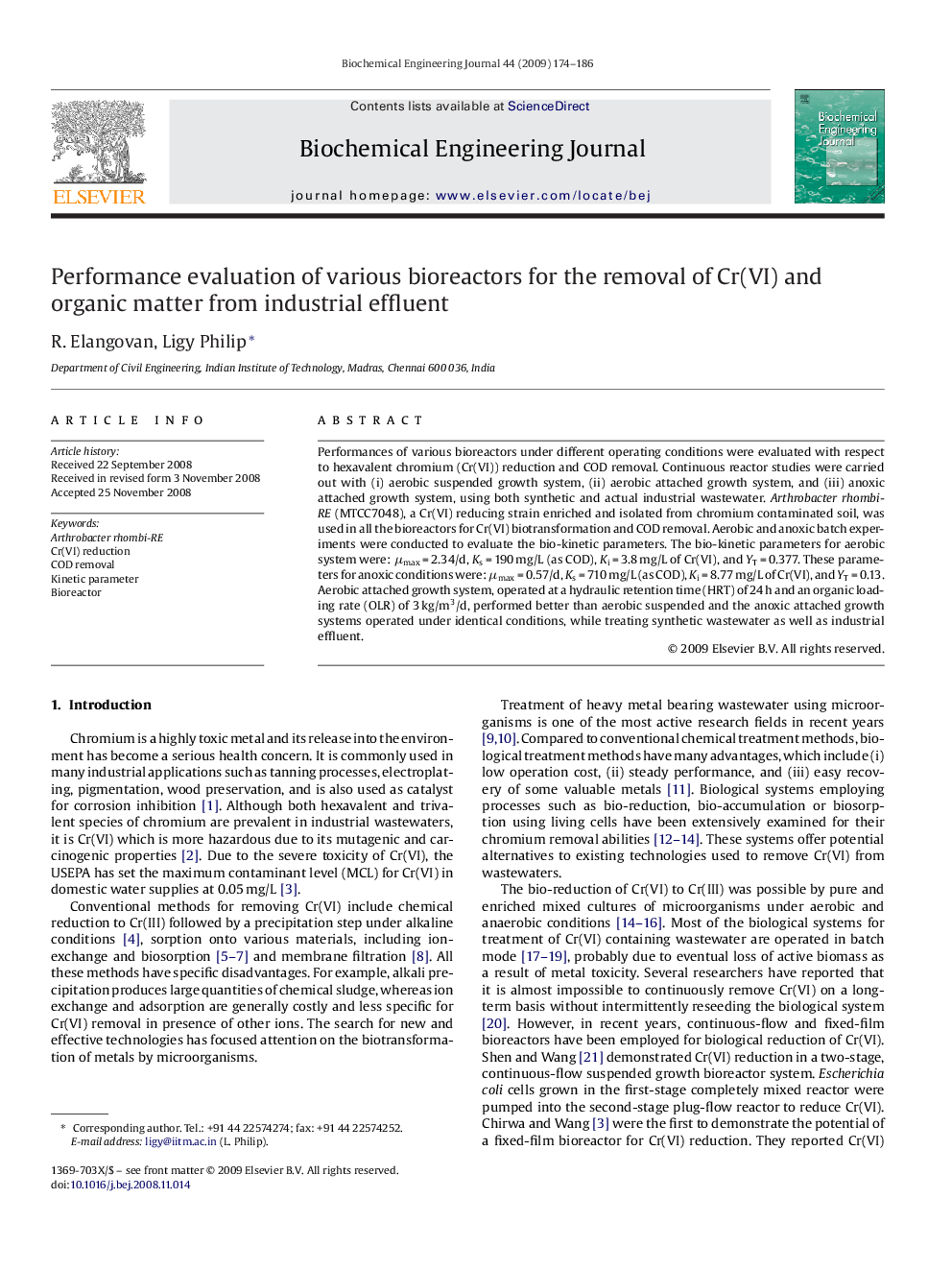| Article ID | Journal | Published Year | Pages | File Type |
|---|---|---|---|---|
| 4266 | Biochemical Engineering Journal | 2009 | 13 Pages |
Performances of various bioreactors under different operating conditions were evaluated with respect to hexavalent chromium (Cr(VI)) reduction and COD removal. Continuous reactor studies were carried out with (i) aerobic suspended growth system, (ii) aerobic attached growth system, and (iii) anoxic attached growth system, using both synthetic and actual industrial wastewater. Arthrobacter rhombi-RE (MTCC7048), a Cr(VI) reducing strain enriched and isolated from chromium contaminated soil, was used in all the bioreactors for Cr(VI) biotransformation and COD removal. Aerobic and anoxic batch experiments were conducted to evaluate the bio-kinetic parameters. The bio-kinetic parameters for aerobic system were: μmax = 2.34/d, Ks = 190 mg/L (as COD), Ki = 3.8 mg/L of Cr(VI), and YT = 0.377. These parameters for anoxic conditions were: μmax = 0.57/d, Ks = 710 mg/L (as COD), Ki = 8.77 mg/L of Cr(VI), and YT = 0.13. Aerobic attached growth system, operated at a hydraulic retention time (HRT) of 24 h and an organic loading rate (OLR) of 3 kg/m3/d, performed better than aerobic suspended and the anoxic attached growth systems operated under identical conditions, while treating synthetic wastewater as well as industrial effluent.
